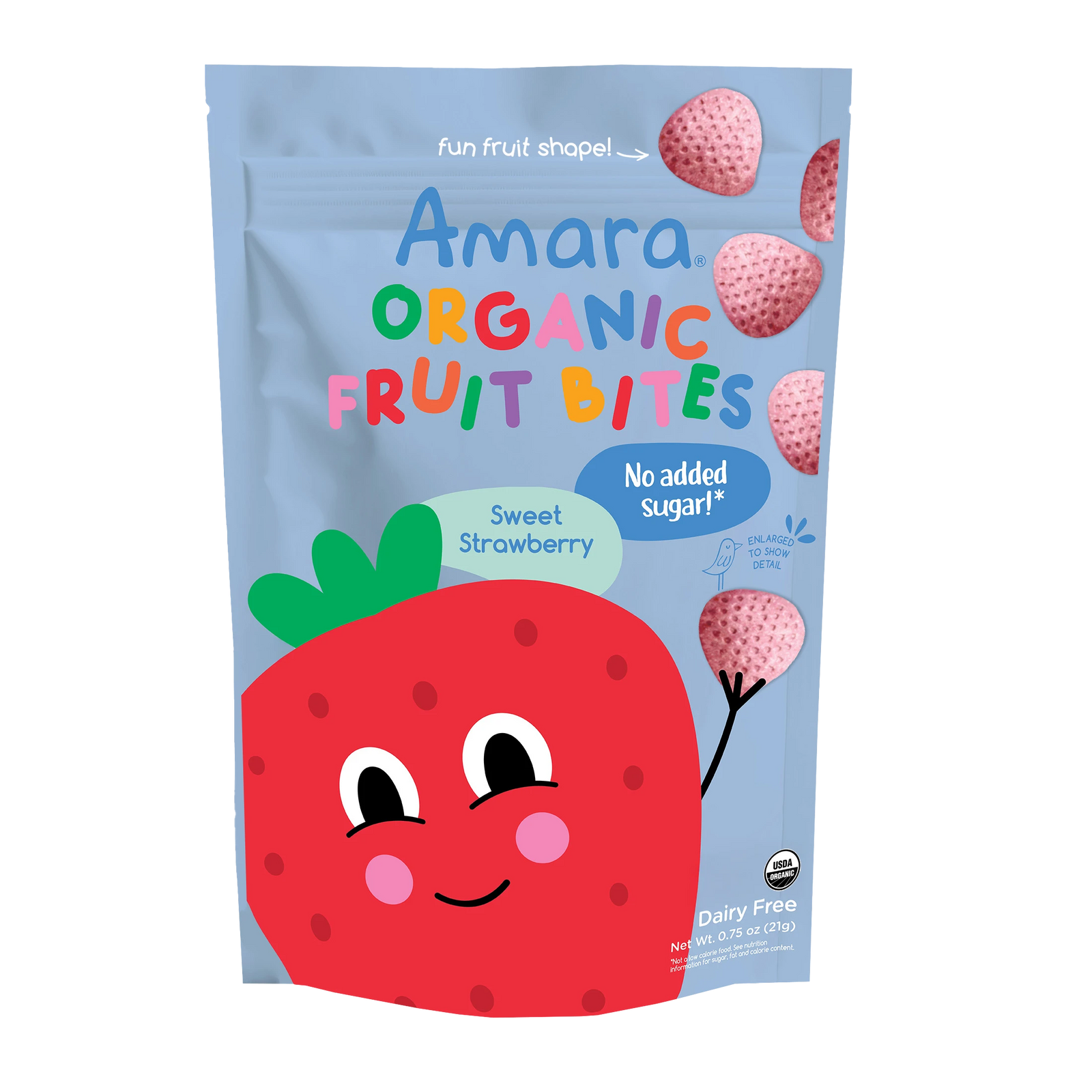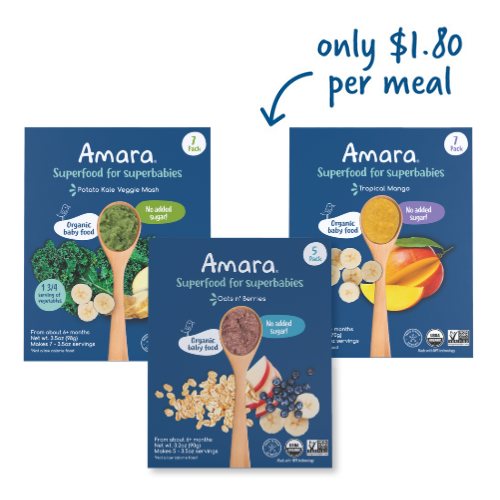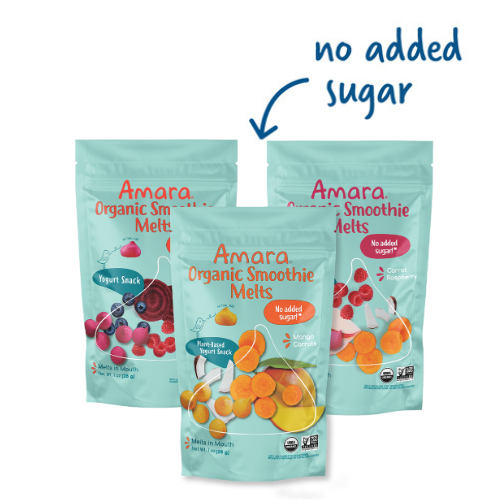Why Amara Baby Food and Why we Decided not to Offer Traditional Squeeze Baby Food Pouches
By: Doctor Sonia Schiess, Nutritionist, PhD
At Amara Organic Foods we use tasty organic ingredients, high-tech preparation, and unique packaging that makes food easy to prepare and serve.
Our products include:
Ingredients, composition and texture adapted to the age of the infants
We work with simple, real food ingredients which the baby can taste in flavor and texture. We offer a variety of fruits, vegetables, grains, proteins and legumes as well as fine and coarse textures.
We choose to include textures, such as in our introduction to textures variety pack to help babies develop the motor skills necessary for healthy growth and development. Delaying the introduction of lumpy foods beyond 10 months has been associated with feeding difficulties (Northstone et al 2001).
Chewing, among other things, is important for the language development. With the traditional baby food pouches, the food has a very smooth consistency and infants do not learn to chew; do not experience different textures.
Raw ingredients
One of our goals with Amara is to offer the best possible alternative to making homemade baby food. Our aim is that babies learn from the start the real taste, texture and aroma of raw, ripe fruit. This is why we choose the best possible technology that keeps the natural nutrients, fiber and bioactive components of the original product intact.
Food selection and food habits are marked in early life: from the age of 2 years, an American is more likely to eat a manufactured sweet than a fruit or vegetable on a given day.
Traditional baby food pouches contain only cooked food (fruits, vegetables), heated multiple times for preservation. At Amara, we use less process so that we can keep those tastes and textures of the real fruits so that your baby starts to discover the tastes and textures of real food.
Cooked ingredients, why not all raw?
Some foods should not be consumed as raw foods for infants, like potatoes, legumes, cereals. Plus, some nutrients are better absorbed if the ingredient was treated with heat before, such as the case of carrots, tomatoes and several others.
At Amara, we recognize that the taste, texture, flavor and aroma will change if it is processed more times than necessary. That is why we choose each ingredient carefully, looking for the most natural and suitable ingredient for your baby.
Education and feeding habits
It is known that the taste and preferences of foods are defined in the early stages of childhood. What kind of foods, tastes and textures should I teach my baby? My toddler? The food habits of infants and children will be influenced by their social and culture environment, starting as early as during pregnancy. Studies show that newborns like sweet tastes from the beginning. Later, the repetition of this taste will influence their acceptance. (Paroche et al 2017, Ellrott 2007)
Some Characteristics of the pouches:
There is a huge variety of different pouches. Supermarkets offer many colorful, promising squeeze pouches to be suckled by the infants/toddlers.
To balance sweet taste and color of the filling manufacturers may apply fruit juice concentrates, which increase the sweetness of the final product.
Fruits and vegetables are throughly cooked, destroying valuable nutrients and bioactive compounds. They will have less fiber, to deacelerate the blood sugar increase amongst others.
Furthermore, they are boiled down without skin or are enriched with fruit juice (concentrate), resulting in a higher sugar content than the original food. This will increase the baby's appetite instead of being a helpful snack.
Sometimes, vitamin C is added for preservation, or even citric acid.
Instead of eating the fruit pure or meal from a spoon, the filling is suckled. Pouches do not change their texture for different ages. It is just a smooth puree.
Chewing is important to promote the healthy development of feeding as well as the language development. Infants should progress from puree to lumps to finger foods and to soft food.
Labels may be misleading. What is claimed on the front is not necessarily the main ingredients in the product when revising the ingredients on the back of the package.
Sweetness of the meal
Ingredients of pouches are in a high % fruits, fruits juice concentrate, which make the meal quite sweet and monotonous from the nutritional standpoint.
Longitudinal studies revealed that babies who were routinely fed sweetened water during the first months of life exhibited a greater preference for sweetened water when tested at 6 months and then again at 2 to 10 years of age, compared to children who had little or no experience with sweetened water as infants (Menella et al 2016).
References:
Northstone et al The effect of age of introduction of lumpy solids on foods eaten and reported feeding difficulties at 6 and 15 months, J Hum Nutr Diet 2001;14:43-54
Paroche et al How infants and Young children learn about food: a systematic review. Review 2017
Ellrott Wie Kinder essen lernen; Ernährung 2007
Menella et al The Development of sweet taste: from biology to hedonics; Rev Endocr Metab Disord 2016)
http://www.verbraucherzentrale-niedersachsen.de/media1159318A.pdf







Leave A Comment